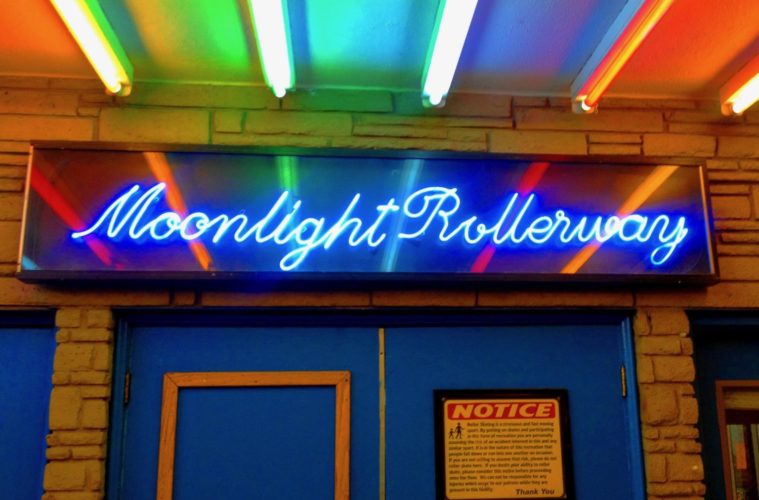Those of us who lament all the beautiful old buildings or cool cultural landmarks knocked down to erect another condo development in Los Angeles must remember that many intriguing locales filled with history and charm remain. For L.A. natives, many of these are not just part of the landscape, they are part of who we are, backdrops to our lives as we grew up here. Despite this connection, we drive by them today and take them for granted, distracted by traffic and the stresses of life in the city. Then there are the hidden gems, largely unknown destinations that only a few might know about or remember.
All of these still-standing vintage venues reflect not only our city’s cultural evolution but conjure a sweet simplicity that many of us find comforting, especially when contrasted with the sometimes soulless-feeling, technologically-driven chaos we’re all surrounded by these days. With the help of Offbeat L.A.’s Nikki Kreuzer, L.A. Weekly put together this collection of 20 cool and nostalgic places — some popular, some forgotten and a few somewhat secret — all offering flashbacks to eras past (from the ’20s to the ’80s). Visit or just marvel at them while they’re still here.
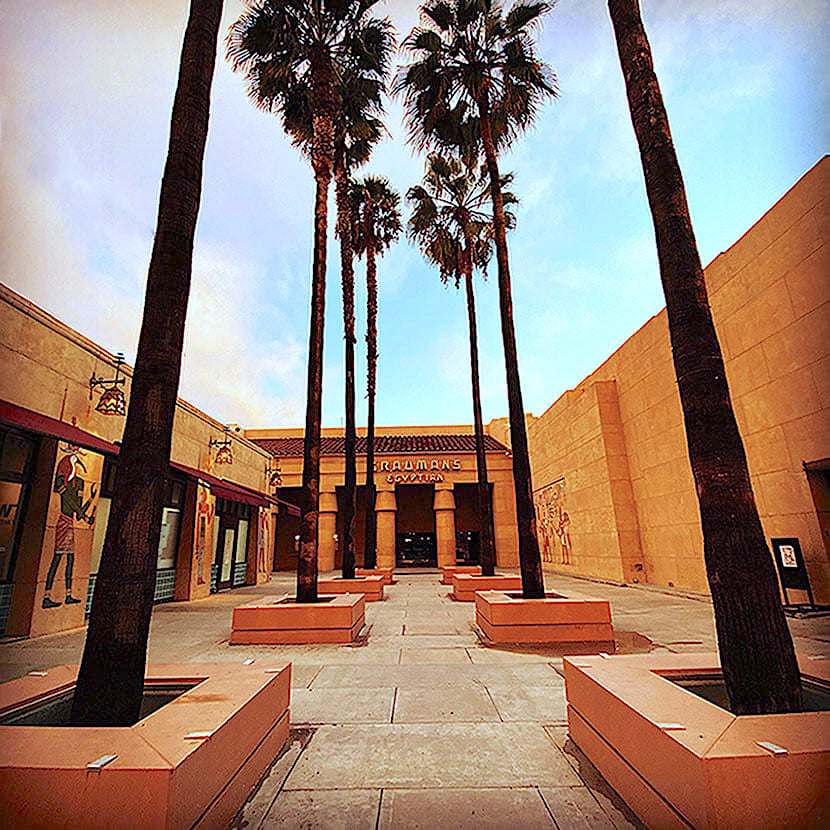
(Courtesy Egyptian Theater)
The Egyptian Theatre was restored/renovated back to its 1922 glory, re-opening in 1998. The home of the American Cinematheque is sometimes taken for granted as it’s on a prominent part of Hollywood Boulevard, surrounded by modern eye candy and beckoning light-up adverts. But it’s the best place in town to soak up Hollywood’s Golden Age (its very first movie premiere was Robin Hood starring Douglas Fairbanks). With multiple screening formats including 35mm (and nitrate film), 70mm and DCP, the Egyptian is not only a museum-like reminder of the past; when it comes to cinema and festivals (Beyond Fest and Noir City: Hollywood), it is leading the city, showcasing the best of the movie world, old and new. 6712 Hollywood Blvd., Hollywood; americancinemathequecalendar.
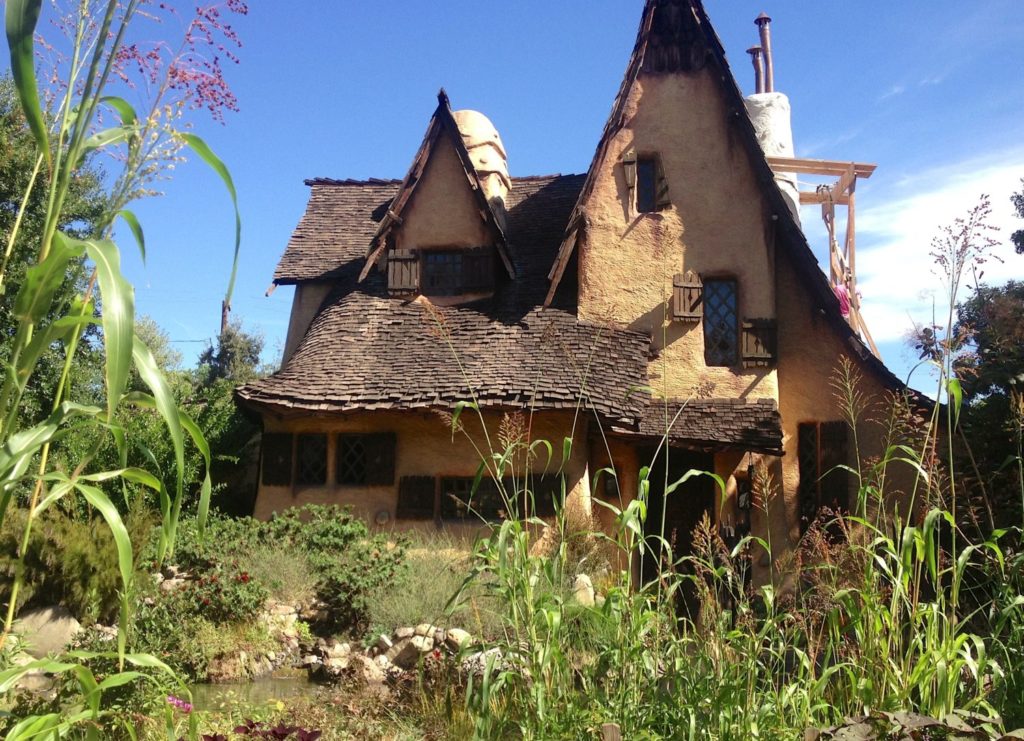
(Nikki Kreuzer)
The Witch’s House was built in 1921 by Hollywood art director Harry Oliver, who made more than 30 films between 1919 and 1938. Originally constructed as offices and dressing rooms for a nearby silent film studio, it was moved to Beverly Hills shortly after and converted into a private home. Designed with a lopsided roof, tiny windows (No two are alike!), overgrown garden, functioning moat and storybook bridge, it looks like something out of a fairytale. Harry Oliver was also the architect of the Tam O’Shanter restaurant in Los Feliz. 516 Walden Drive, Beverly Hills; private residence, please do not disturb. —N.K.
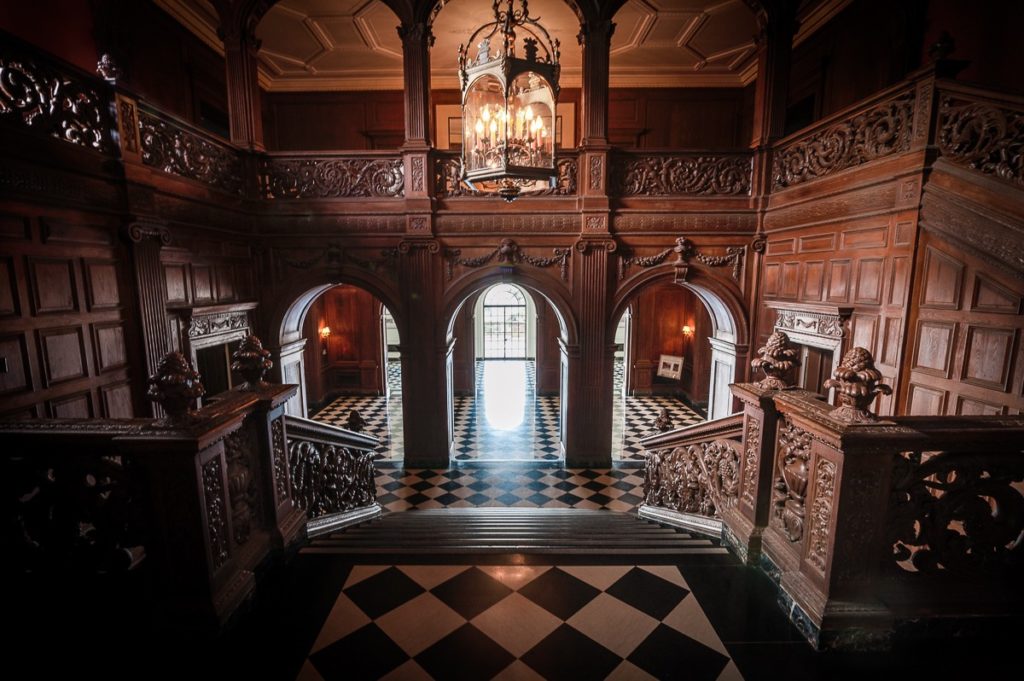
(Jared Cowan) See L.A. Weekly’s “Cinematic Slideshow” here.
Commissioned by oil tycoon Edward L. Doheny (inspiration of the film There Will Be Blood) for his son, Ned, the 46,000-square-foot Greystone Mansion was built in 1928 by Gordon Kaufmann, well-known architect of the Hoover Dam and the L.A. Times building. With incredible decor, an original Brunswick bowling alley and sprawling multilevel terraced neoclassical gardens providing spectacular citywide views, the history of the property even includes an early L.A. murder scandal. Admission to the grounds is free, but tours of the house are scheduled in advance with a fee. 905 Loma Vista Drive, Beverly Hills; greystonemansion.org. —N.K.
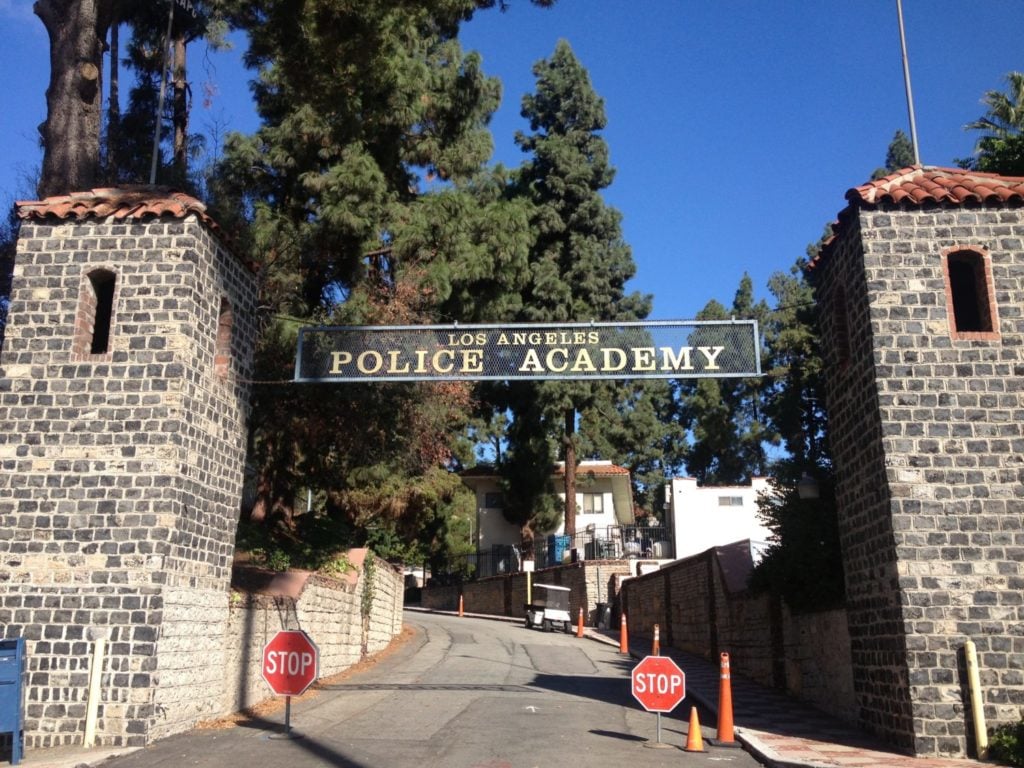
(Nikki Kreuzer)
The Los Angeles Police Academy was built in 1935 and its beautiful stone work was apparently laid by men doing hard labor after being arrested for public drunkenness. Framing its entrance are tall stone gates that many may recognize from the opening credits of the 1970s TV show Charlie’s Angels. Inside, a fairytale-like rock garden has multiple maze-like levels, charming rustic stone staircases, waterfalls, ponds, hidden seating areas and trails. It was designed in 1937 by landscape architect François Scotti, who went on to design the 20-foot waterfall downtown at Clifton’s Cafeteria. 1880 Academy Drive, Elysian Park. —N.K.
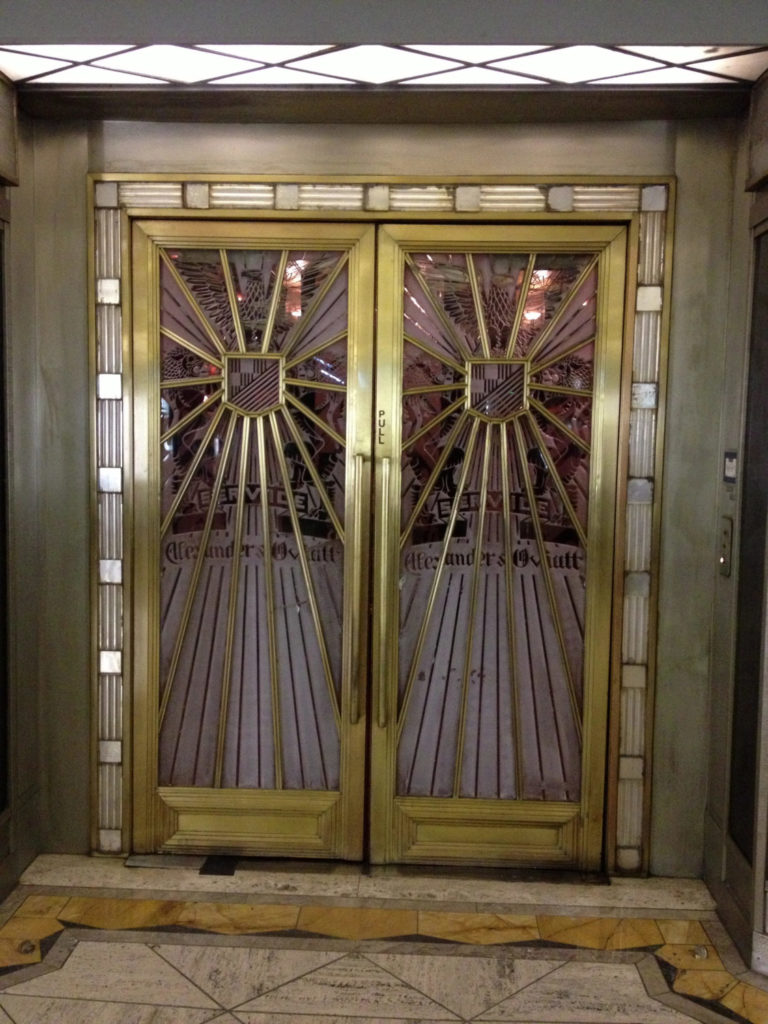
(Nikki Kreuzer)
Built in 1928 to house an upscale men’s clothing store, the Oviatt Building is a gorgeous example of surviving Art Deco architecture in Los Angeles. Filled with original glasswork by Deco craftsman Rene Lalique, ornate chandeliers, opulent dark wood and exquisite details throughout, even the exterior outside lobby is a wonder to behold. Tours are given by local architectural preservation groups, but the Cicada Club also offers dinner, dancing and live vintage-themed music on Friday and Saturday nights. 617 S Olive St., downtown; cicadaclub.com. —N.K.

(Courtesy Chateau Marmont)
Still one of the most glamorous destinations in town, the Chateau Marmont plays host to fabulous parties and events on a regular basis. Hanging at Marmont is a very Hollywood thing to do, but it’s also a divinely nostalgic experience that can’t be knocked, as the grounds and building (erected in 1927) are as beautifully preserved as the patrons who frequent it. La La Land aside, the Chateau is another one of those places you probably drive by constantly, giving it little thought. But it’s one of our most historic locales, a place where decadence and the dark side of Hollywood have manifested, keeping the mystique of the past alive. 8221 Sunset Blvd., West Hollywood; chateaumarmont.com. —L.L.
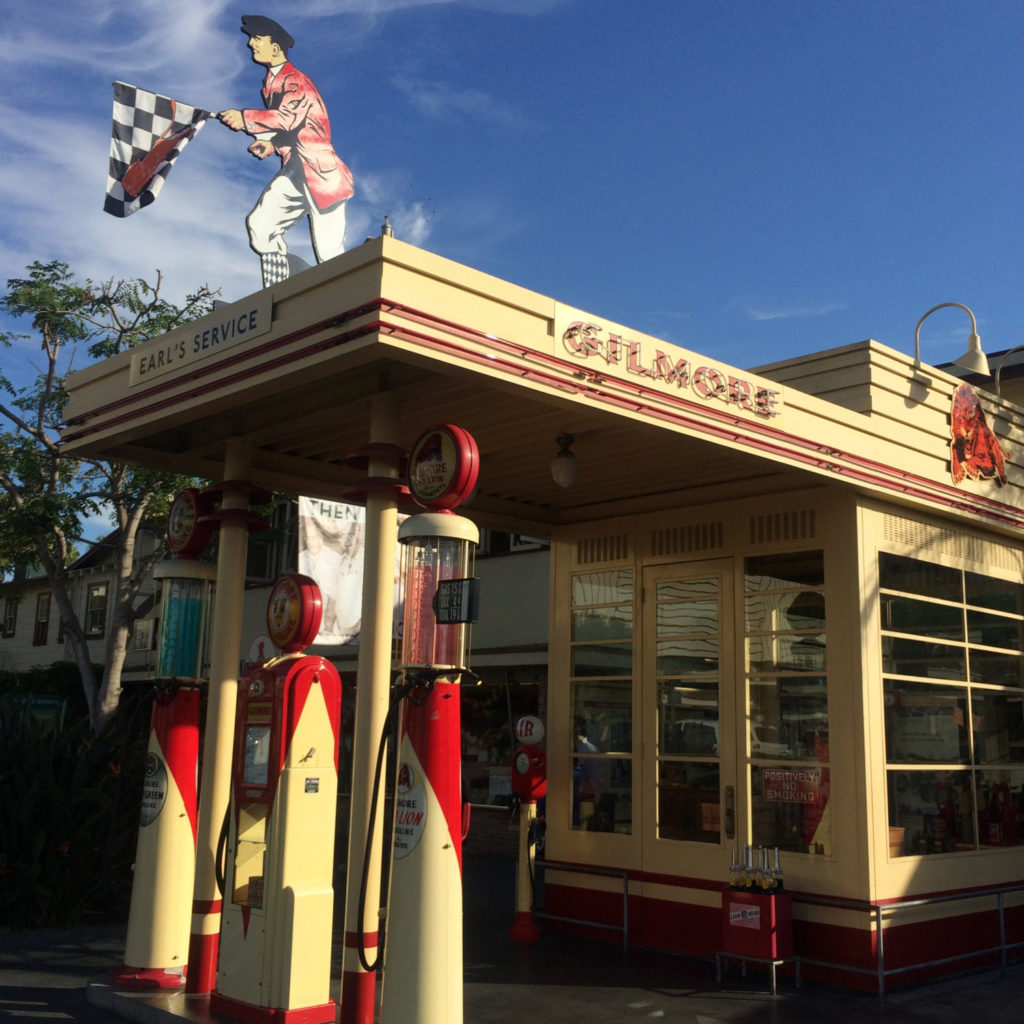
(Nikki Kreuzer)
In spite of, or maybe because of, its proximity to the fancy Grove shopping mall, The Fairfax Farmers Market, which opened in 1934, has a certain retro magic about it that’s palpable when you walk inside of it to this day. As a kid growing up in L.A., we have several memories of eating there, buying produce (before farmers markets became a thing) and most importantly, seeing celebrities on break from the nearby CBS studios. In later years, E.B.’S Beer & Wine provided an opportunity to sip craft beers in a lively family environment, often enlivened by live music, especially during Mardi Gras and St. Patty’s Day; it’s truly a holiday ritual for locals. The place gets bonus points for the old-school goodness of adjacent Dupar’s, which has and still does put modern ’50s diners to shame. 6333 W. Third St., Fairfax; farmersmarketla.com. —L.L.
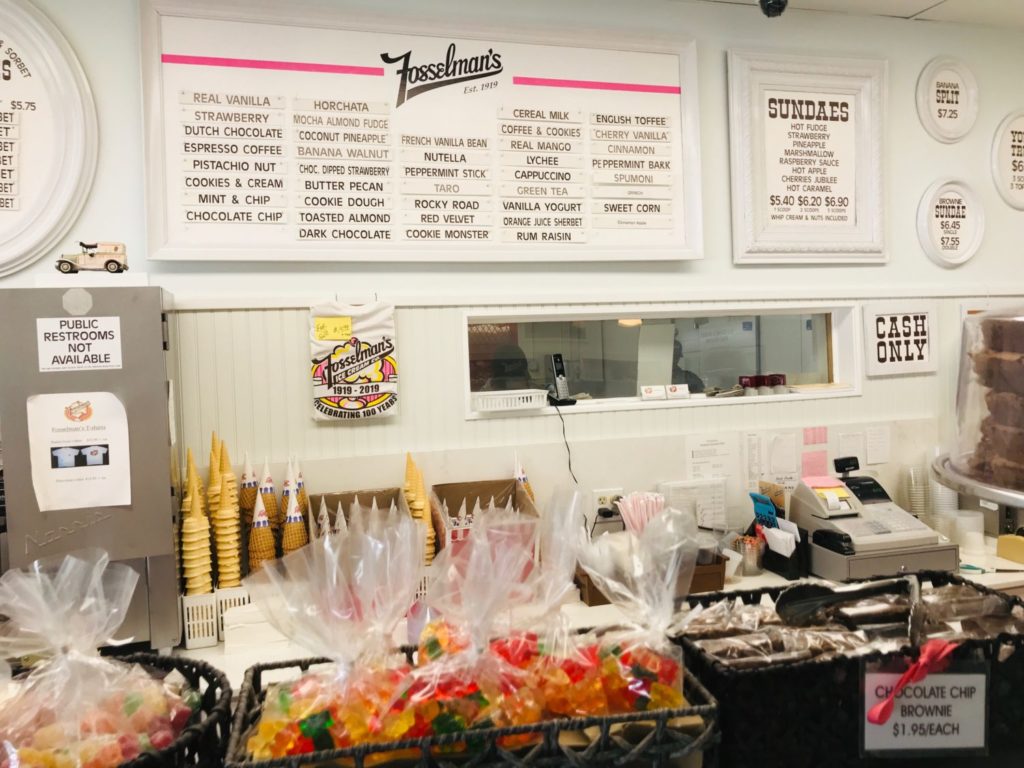
(Nikki Kreuzer)
’40s & ’50s
Bringing warm and fuzzy memories to generations of Southern California children, Fosselman’s Ice Cream turned 100 years old last year. Though it was a couple decades later that this Alhambra shop opened in 1941, it is the oldest surviving ice cream parlor around. With its tubs of homemade ice cream, candy counter, vintage decorations and small cafe tables, ordering a scoop will take you right back to being a kid. 1824 W Main St., Alhambra; fosselmans.com. —N.K.
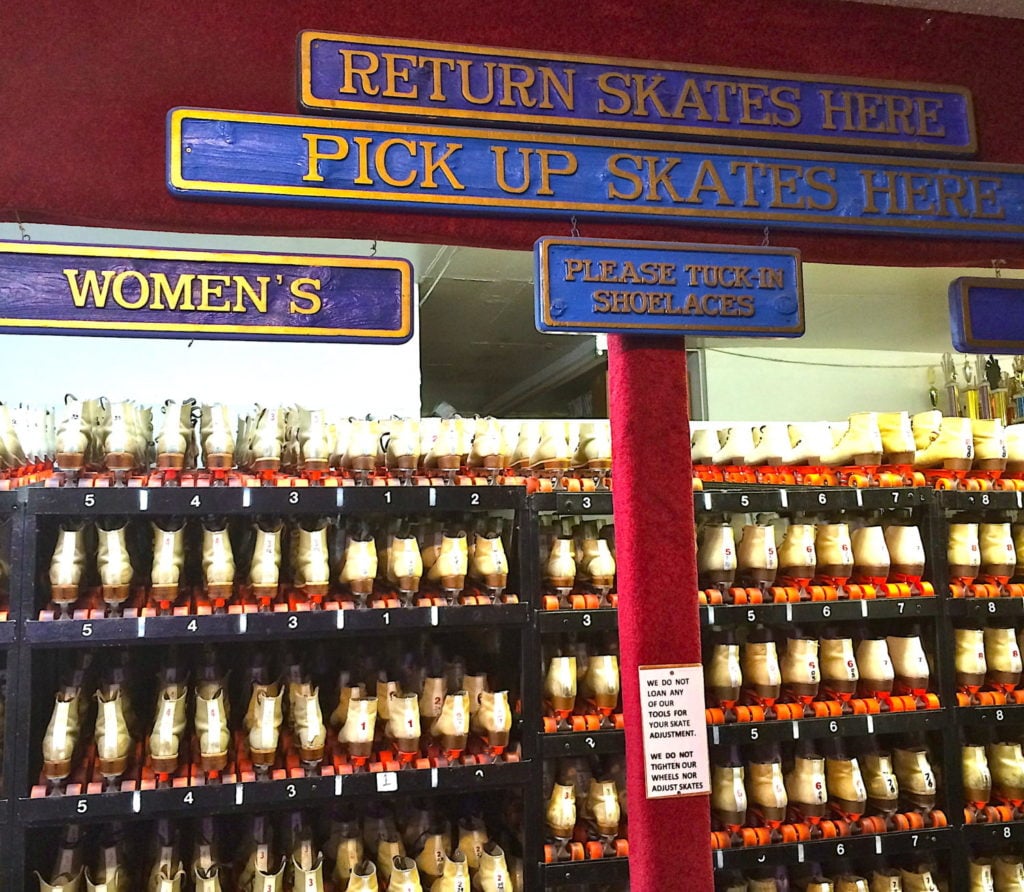
(Nikki Kreuzer)
Moonlight Rollerway is one of our area’s only surviving vintage roller skating rinks, a place where time stands still and where laughter echoes from behind its doors. Built in 1950 during the post-WWII roller skating boom, it was renamed Moonlight Rollerway in 1963 and has kept the original interior mostly intact, right down to the original tongue-in-groove wooden skate floor. The current owner, Dominic Cangelosi, bought the rink in 1985, but has been playing the vintage Hammond B3 organ there since the 1960s. 5110 San Fernando Road, Glendale; moonlightrollerway.com.—N.K.
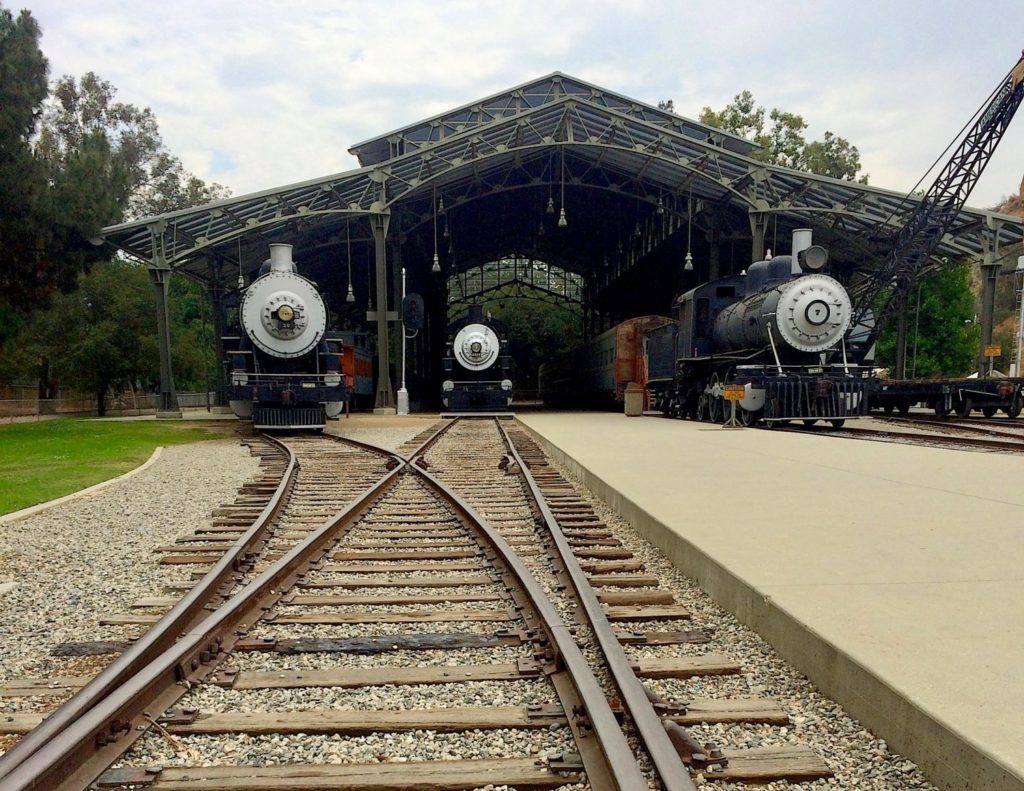
(Nikki Kreuzer)
Tucked away in the northwestern corner of Griffith Park, Travel Town has been entertaining children and adults since 1952. Focusing on train history from 1880 to the 1930s, with special attention to Southern California, this outdoor museum displays 43 full-scale railroad engines, passenger cars and more. A working miniature train is quite fun and can be ridden for a fee, giving two circles around the museum grounds. An exhibit room displays artifacts relevant to the history of the railroad in the United States. 5200 Zoo Drive, Griffith Park; traveltown.org. —N.K.
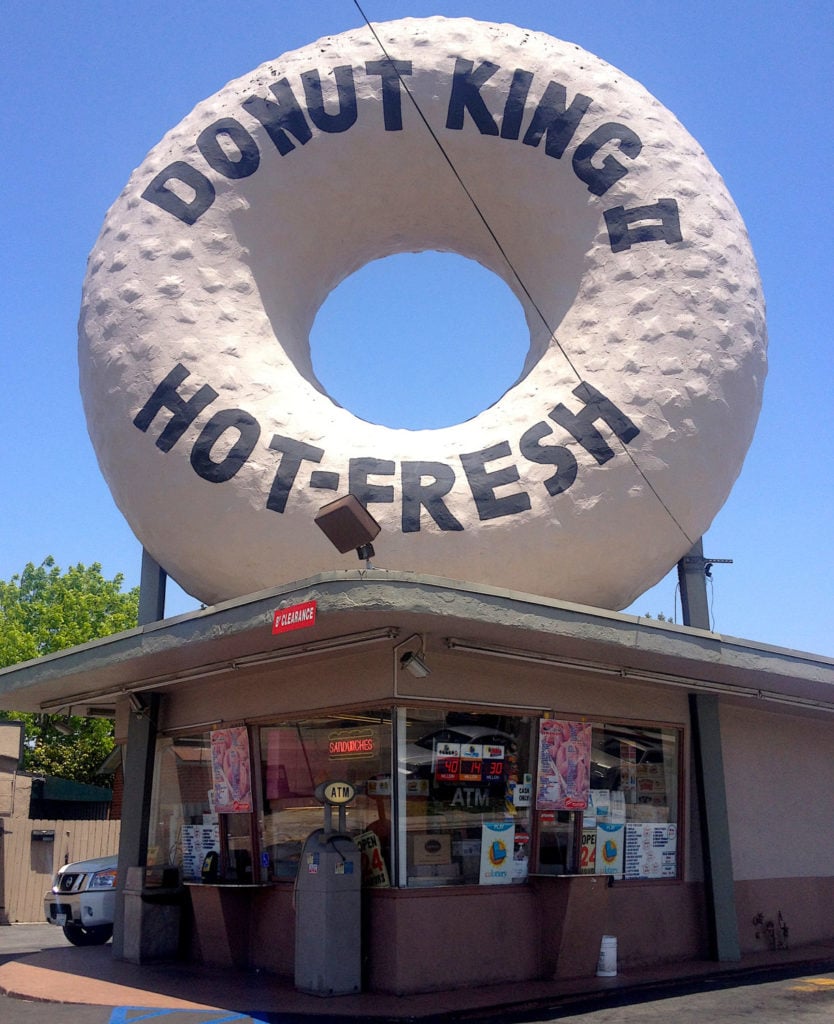
(Nikki Kreuzer)
Randy’s Donuts, built in 1953, is an iconic symbol of L.A., but it isn’t our only giant donut. There are four others, all built in the 1950s as part of a 10-store chain called Big Donut Drive-In. Opened by a donut machine salesman, the 32-foot roof-mounted donuts are made of steel covered with gunite, a material used to build swimming pools. The first Big Donut, now called Kindle’s, is still operating in South L.A. The other survivors are in Compton, Gardena and Bellflower. Randy’s, 805 W. Manchester Blvd., Inglewood; Kindle’s, 10003 Normandie Ave., Westmont; Dale’s Donut’s, 15904 Atlantic Ave., Compton; Donut King 2, 15032 S. Western Ave., Gardena; Bellflower Bagel, 17025 Bellflower Blvd., Bellflower. —N.K.
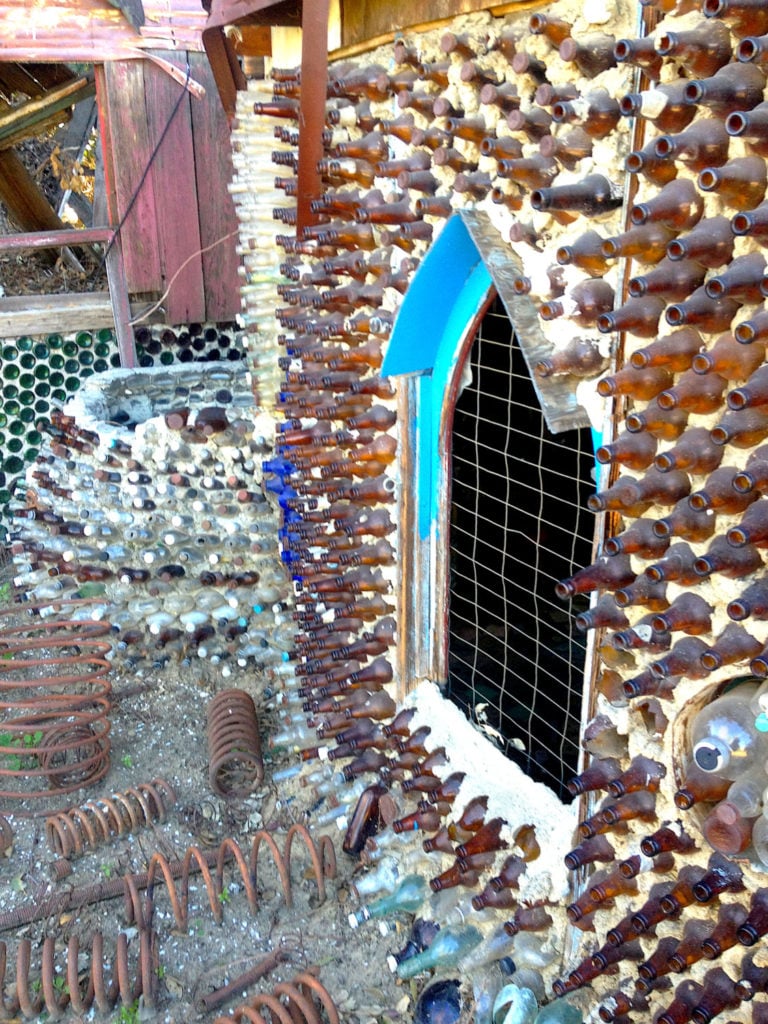
(Nikki Kreuzer)
Grandma Prisbrey was 60 years old in 1956 when she began building retaining walls from cement and bottles she collected at the Simi Valley dump. She soon built a village of 13 little bottle houses, 22 sculptures and mosaic walkways, deemed Grandma Prisbrey’s Bottle Village. With a quirky sense of humor, her Spring Garden was built with actual metal springs and her Headlight Planter was made from doll’s heads and car headlights. A photo of one of Grandma’s doll head sculptures was used for the cover of the 1982 record Mexican Radio by the band Wall of Voodoo. 4595 Cochran St., Simi Valley; bottlevillage.com. —N.K.
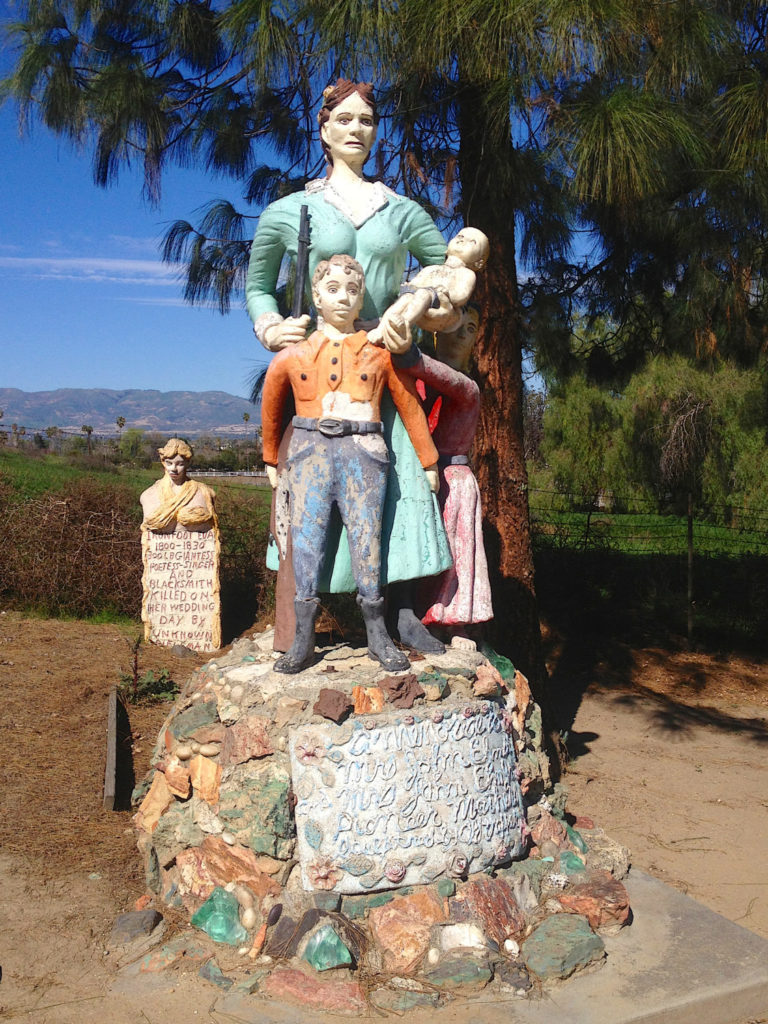
(Nikki Kreuzer)
The Old West comes to life in a bizarre and slightly creepy sculpture park located in a remote corner of Pierce College. Old Trapper’s Lodge was created and run by Burbank motel owner John Ehn from 1951 to 1981. This surreal collection was created to stir up business for his motel, Old Trapper’s Lodge, which was eventually razed for the Burbank Airport. A self-taught sculptor, Ehn crafted larger-than-life depictions of tall tales, such as the battle between Peg Leg Smith and a Native American named Big Bear and imagined his own tongue-in-cheek graveyard called Boothill. 7100 El Rancho Drive, Woodland Hills; free. —N.K.
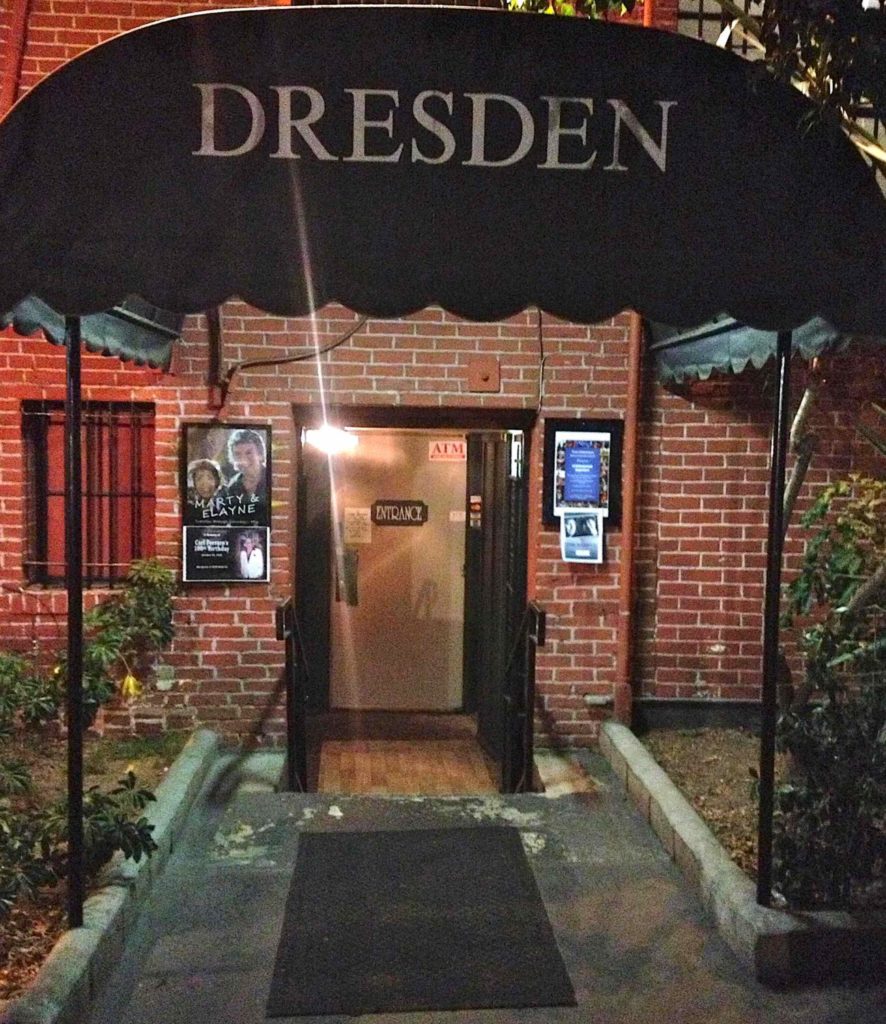
(Nikki Kreuzer)
Charming old bars are a dying breed in L.A., but as we celebrated in our book Los Angeles’ Best Dive Bars: Drinking and Diving in the City of Angels, many remain. The book is 10 years old but we’re happy to say drinking holes such as The Frolic Room, HMS Bounty and Tiki Ti are still alive and swiggin’ in L.A., plus they boast original decor. If you’re looking for a nostalgic cocktail vibe, though, we must remind you to hang at The Dresden Restaurant & Lounge. The family-owned establishment opened in 1954 and though old, it’s really quite a luxe little environment. Yes it’s the bar from Swingers (1996) that made retro culture and hipster culture synonymous (not the case anymore, unless you’re over 40) but the draw remains the live music courtesy of the ever-sprite jazz duo of Marty and Elayne, who’ve been performing there for almost four decades! 1760 N. Vermont Ave., Los Feliz; thedresden.com. —L.L.
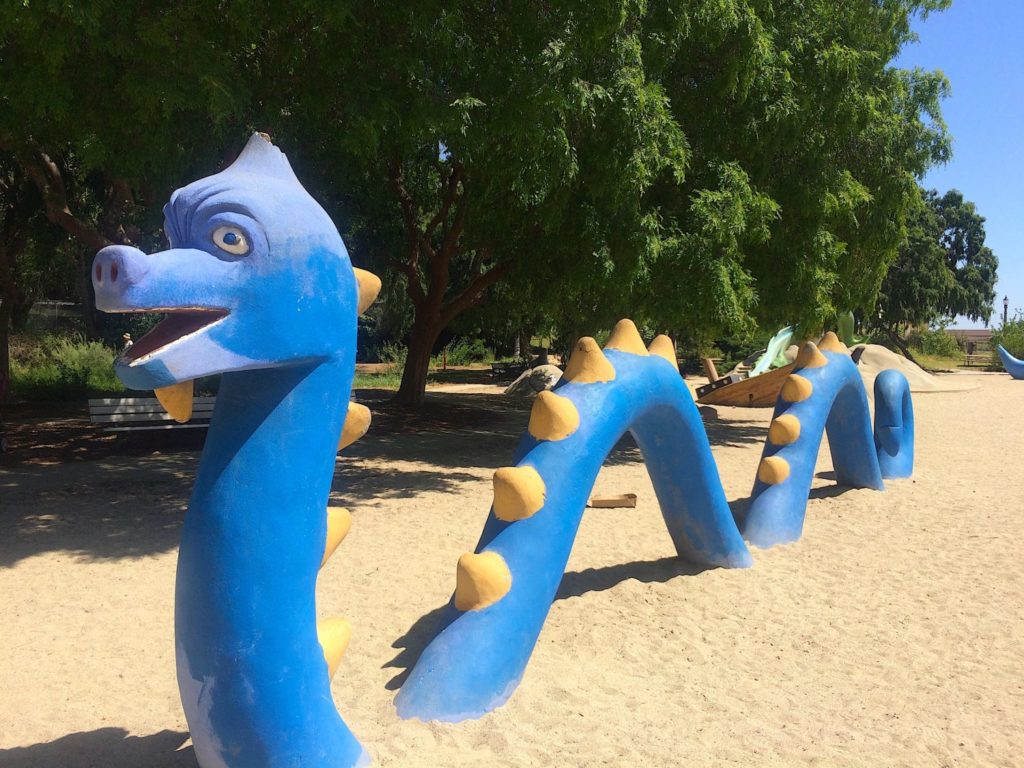
(Nikki Kreuzer)
’60s, ’70s & ’80s
San Gabriel’s Monster Park is a magical children’s play park created in 1965 by 70- year-old master concrete sculptor Benjamin Dominguez, who had immigrated to the U.S. from Mexico eight years earlier. Modeled after a lagoon, the incredible climbing equipment is eccentric and surreal, consisting of 14 pieces, including a sea serpent frolicking in a sandy sea, a giant octopus, a lighthouse with a sea serpent slide, a cement mountain with a large fanged sea monster slide and an enormous whale, whose tongue functions as a slide. 300 W. Wells St., San Gabriel. —N.K.
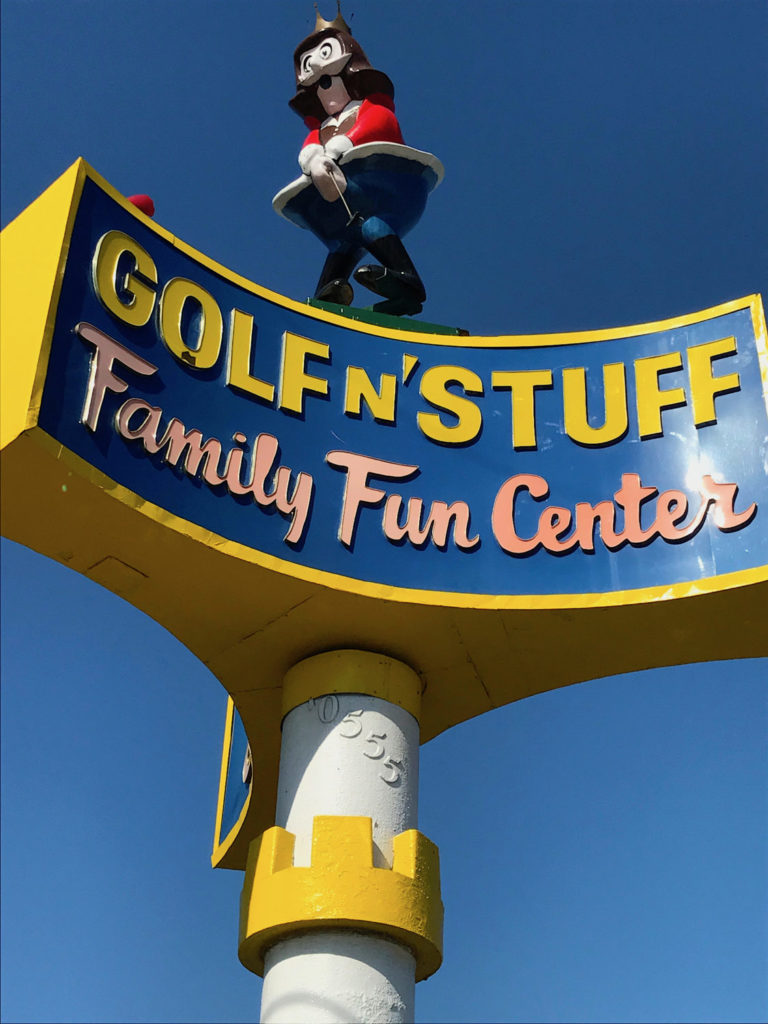
(Nikki Kreuzer)
Opened in 1969 and still possessing most of its original vintage sculpture, the kitschy 18-hole mini-golf course at Golf N’ Stuff is full of magic castles, a haunted mansion, pirates with treasure, a reproduction of Big Ben, a Dutch-style windmill and a 15-foot-tall tree house which gave it a Guinness World Record in 1983 after a publicity-seeking actor lived there for nearly a year and a half. Scenes from the movie The Karate Kid were also filmed here in 1984. 10555 Firestone Blvd., Norwalk; golfnstuff.com/norwalk/info.
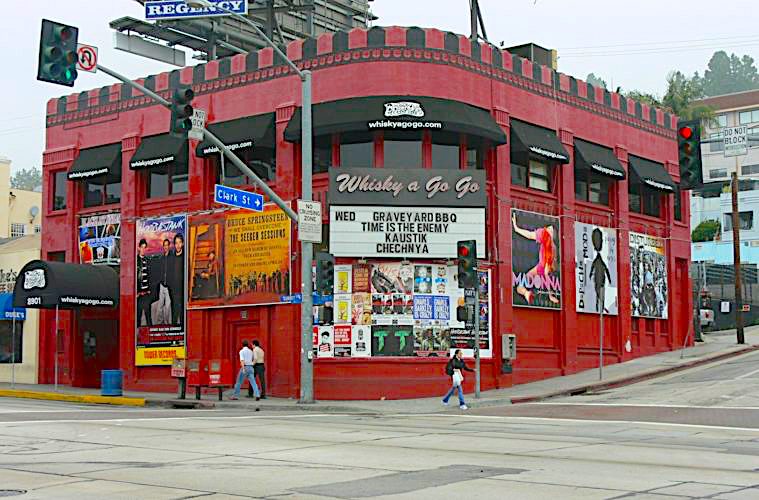
(Mike Dillon/Wikimedia Commons) Read L.A. Weekly’s list of the “10 Most Legendary Whisky Shows” here.
When it comes to music and nightlife, L.A. has plenty of iconic still-standing structures where historic music moments took place, but the Whisky a Go Go rocks to the top in terms name recognition and stellar shows on stage. And the cool part is it’s been largely unchanged since its second reign as a rock hub — there’s still the wood paneling, tacky neon and bad sight lines on the second level, which fans of retro atmosphere gotta respect, even if we don’t respect its pay-to-play-ish ways these days. We all know about the ’60s and ’70s heyday when the Doors, the Byrds, Led Zeppelin and Kiss wowed crowds, but the ’80s rock scene saw an equally formidable flood of superstars — Guns n’ Roses, AC/DC and Mötley Crüe — and the venue milks its metal vibes to this day with jam nights and tribute bands regularly. 8901 Sunset Blvd., West Hollywood; whiskyagogo.com. —L.L.

(James Bartlett) Read L.A.’s Weekly’s “Brief History of Downtown’s Futuristic Bonaventure” here.
It’s been outdone by several structures in downtown since it was constructed in 1976, but The Westin Bonaventure Hotel and Suites is still one of our most special buildings. Those of us who grew up in L.A. can probably still recall the wonder of driving by it on the 110 freeway as kid, its shiny cylinders gleaming in the sun as the elevators that separate each column moved up and down. Designed by architect John C. Portman Jr., the Bonaventure sort of represented L.A. to outsiders in the ’70s, especially since it was seen in so many of the era’s TV shows. Located on the 34th floor, the hotel’s revolving lounge and restaurant has seen some changes over the years, but one thing that remains is the gorgeous view of a city which has changed a lot since the ’70s, but still feels both cinematic and nostalgic. 404 S Figueroa St., downtown; marriott.com/hotels/travel/
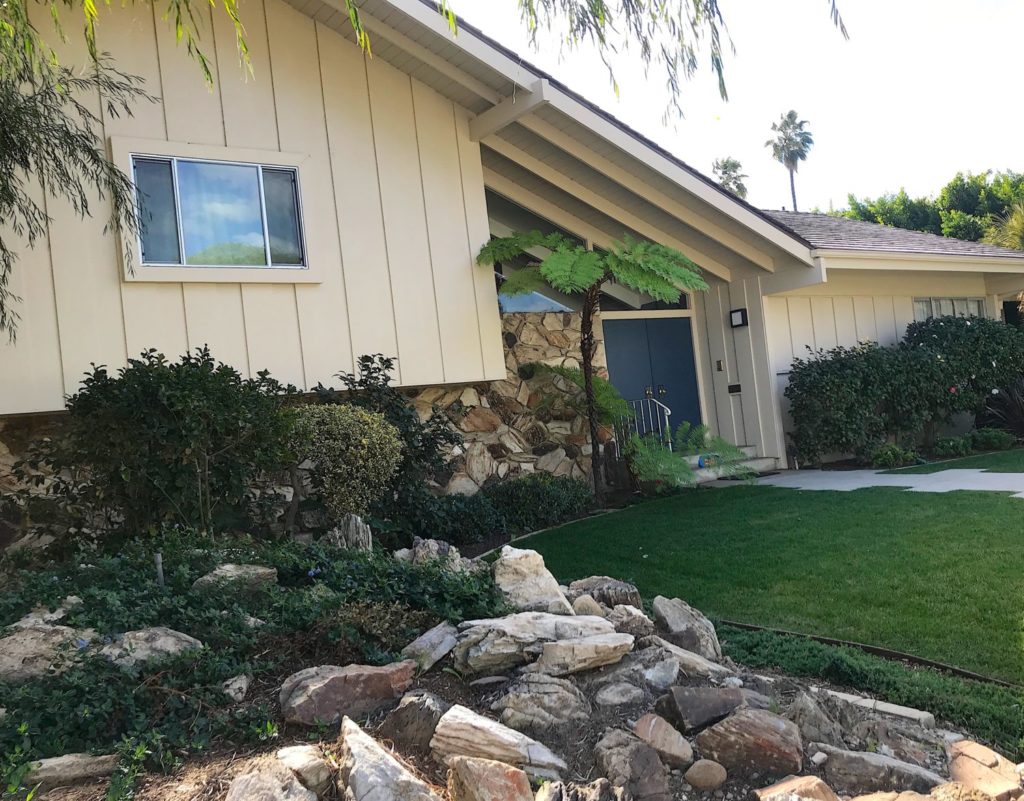
(Nikki Kreuzer)
When it comes to iconic domiciles in L.A., there are many that top architecture fans and pop culture junkies’ visit lists; the gorgeous Sowden house (1926) on Franklin Avenue, Danzig’s creepy house, also on Franklin (he sold it a few years ago, though), the Stahl house (1960) — a modern glass-paneled oasis overlooking Sunset Boulevard — and, of course, the Playboy Mansion. But there is an even more famous home that we all know and love here, and if it doesn’t evoke nostalgic pangs you must have been Amish and not allowed to watch television as a child. We’re talking about The Brady Bunch House — the place where a man named Brady and a lovely lady raised six kids in the ’70s. After HGTV replicated the interior sets from the show into the rooms of the Studio City home used for exteriors, it has been more popular than ever as a drive-by tourist attraction. Sadly there are no tours inside happening at this time, but at least you can watch the show. 11222 Dilling St., Studio City. —L.L.
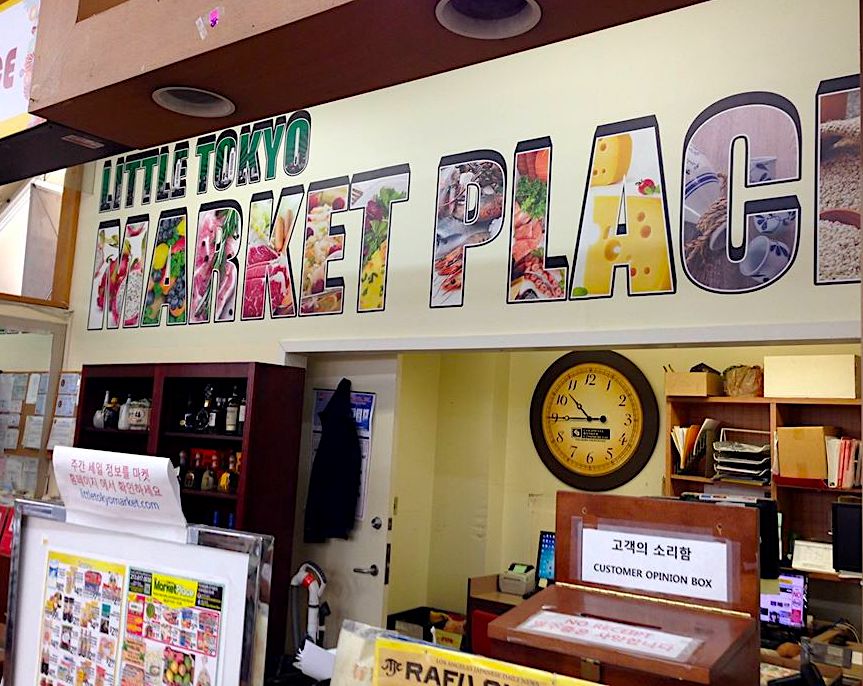
(Courtesy Little Tokyo Marketplace)
Mall culture was huge in the ’80s, thanks to Moon Unit Zappa’s “Valley Girl” immortalizing the lifestyle, but since then pretty much every one of the spots we hung out in as kids has seen a sleek white Apple Store–style remodel in efforts to compete with online shopping dollars. That’s why we love the three-story Little Tokyo Marketplace. Originally called Yaohan Plaza, the building opened in 1985 and looks largely the same as it did then. The retro-futurist environment houses lots of Asian merchandise and vendors, including a Daiso, as well as a market, karaoke studio and of course lots of great sushi options. 333 S. Alameda St., downtown; littletokyomarket.com/. —L.L.
Also read Nikki Kreuzer’s survey of vintage restaurants here.
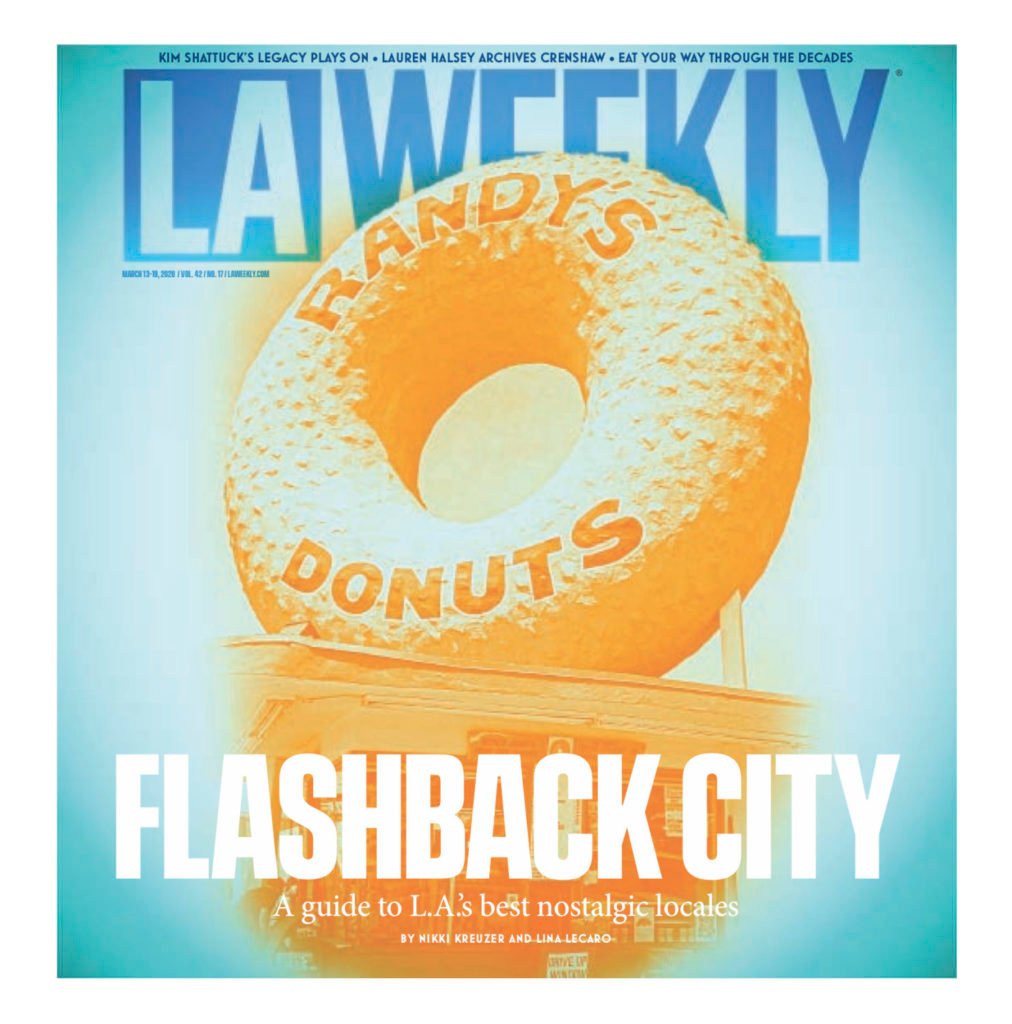
Read this cover story in print at these pick-up locations.
Advertising disclosure: We may receive compensation for some of the links in our stories. Thank you for supporting LA Weekly and our advertisers.

